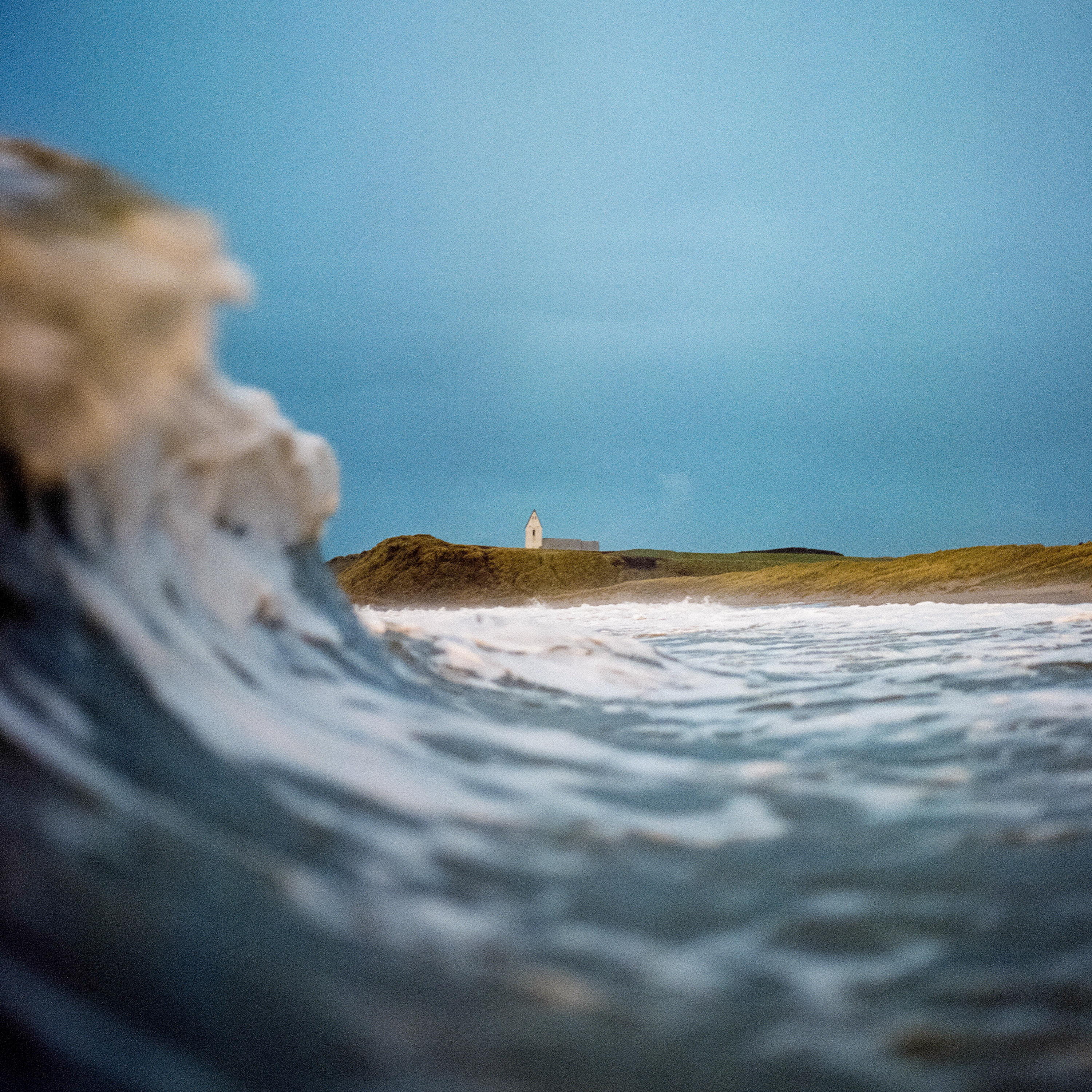“It is not the photos at the end; it’s the feelings, the experiences, the people and the nature in the individual moments that make up the photo for me personally,” says Hamburg based photographer Swen Bachmann. A long term fan of Hasselblad cameras and their adaptability, Swen loves using his 500CM with underwater housings. Unlike most photographers who buy such housings though, Swen prefers to use these just above the surface of the oceans.
Want to get your work featured? Here’s how to do it!
You don’t often hear of photographers taking medium format cameras underwater or even close to it. The first time I heard of this was when I interviewed Barney Smith some months ago. Swen doesn’t like to go underwater much with his Hasselblad. Instead, he prefers to float with it and connect with nature at sea level, soaking up the surf and the sun while making great pictures.
The Essential Photo Gear Used by Swen Bachmann
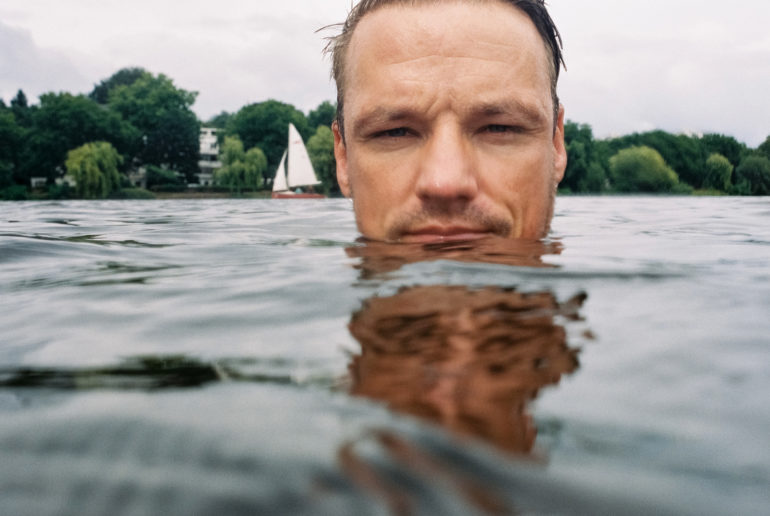
Swen told us:
- Hasselblad 500 C/M
- Magazines – 6×6 and 6×45
- Hasselblad 907X
- CFV II 50C digital back
- Hasselblad XPAN
- Salty Surf Underwater Housings
Today I use Hasselblad cameras almost exclusively, due to their design, because I can use them all in the water and on land in different configurations and the different formats (6×6 or panorama) go well with the individual moments in the sea.
The Phoblographer: Please tell us about yourself and how you got into photography.
Swen Bachmann: Hi, I´m Swen. 45 years old, and I am living with my wife and our dog in Hamburg, Germany. My experience in photography is long but very simple. In my whole life, there was always a camera around somewhere. But there was never a clear awareness that this could be something for me. It was more like documenting everyday life, vacation or work. Despite this point, it was always a bit more than normal. For example, in my former time as a soldier, I created videos for my comrades with moving and silent images at the end of every infantry exercise or exercise with the tank. This continued with my work in a surf camp and finally with my work in a film production company. So basically, it was a creeping process as photography slowly dominated my life more and more.
In the end, I’ve been almost exclusively in analog photography for a number of years. I love the look and the feel that only film gives me. Simply the whole process without automation, taking time for each individual frame, letting go of individual moments, and the charming, mysterious results is a treat. I have handed over my development and the scanning of the negatives to MeinFilmLab in Germany for a number of years; I hardly sit at the computer anymore – simply wonderful.
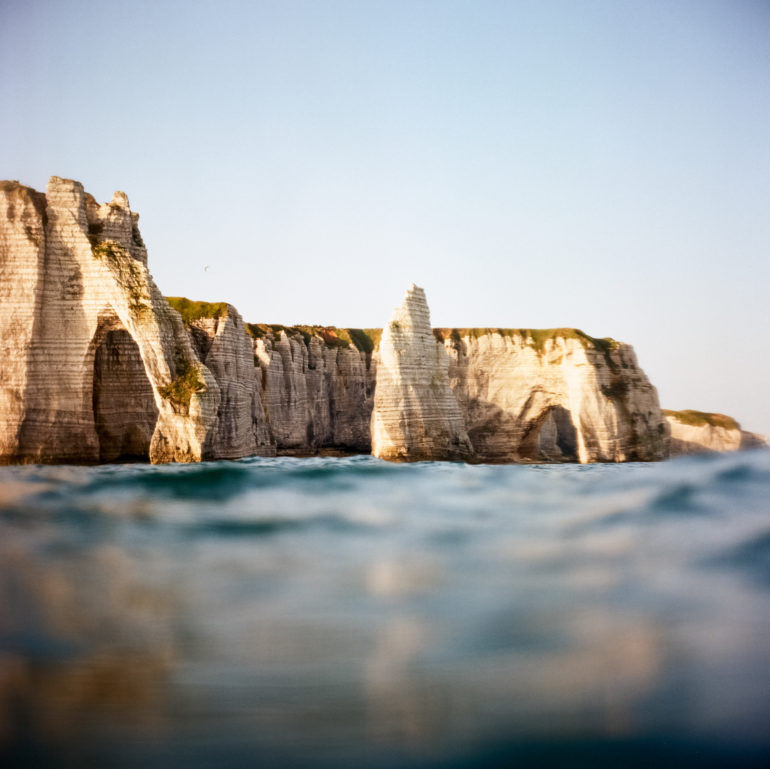
The Phoblographer: What led you to choose an expensive 500C/M for your underwater work?
Swen Bachmann: The first reason is, I just think they’re really beautiful. Secondly, I just like the modular design, where I can put the camera together as I want it or the situation needs it. Whether in the water or out of the water, whether light or heavy, whether 6×6 or 6×45, whether analog or digital – fortunately, in the Hasselblad cosmos, you can find everything for the V system. And a nice side note is that I have one of the old Hasselblad technicians who can fix things for me in the immediate vicinity.
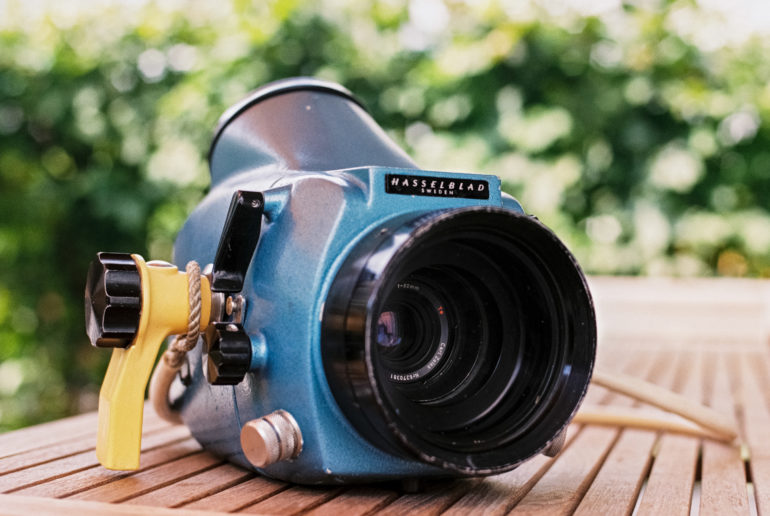
On the one hand I use the medium format camera Hasselblad 500 C/M with various lenses (from 50mm to 350mm), magazines (6×6 and 6×45) or accessories and above all of course the original underwater housing from the early sixties. I also have the relatively new 907X with the CFV II 50C digital back and now I’m able to use all my analogue things digitally.
The Phoblographer: Tell us some of the technical challenges you face while shooting in the oceans.
Swen Bachmann: The biggest challenge in the ocean when taking photos is surely getting the focus in the right place. At long distances and with the aperture closed, this is certainly not a problem, but since I love to take photos with the aperture open, distance will be appreciated and the pre-focusing, especially when surfing or the close range while sailing to work. But this is not the greatest challenge. The constantly changing conditions and perspectives in the sea (currents, waves and wind) in connection with the surfers or the ships or nature of the sailing boats make the whole thing an art and an experience. And it does not matter whether I am out and about with the six-kilo underwater housing of the 500 CM on my bodyboard or with my Takacat inflatable boat for other projects. It is and remains a bit of work, but very nice under the open air.
The smallest challenge, however, is the light measurement. If I have very different lighting conditions, then I use an app on my iPhone, which is in the AxisGo underwater case. If I have relatively constant lighting conditions, I measure once at the beginning before I go into the water and then change the aperture or shutter speed based on my experience.
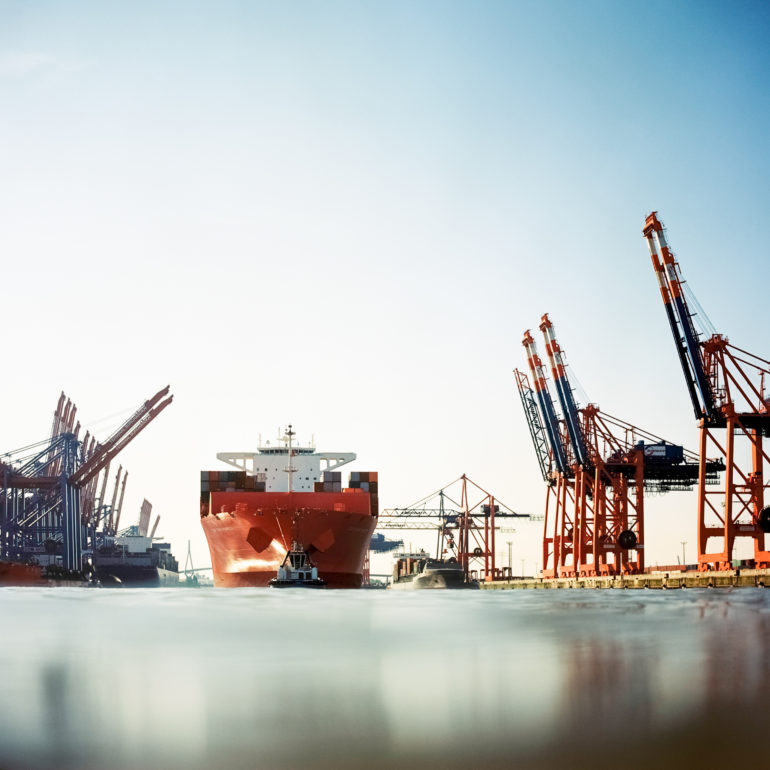
The Phoblographer: It’s not quite underwater photography, more like on the water. How did the idea for this come about?
Swen Bachmann: There is a very simple explanation for this. Through my hobby surfing, I have learned to love this way of seeing the world – floating in the water, experiencing and feeling nature directly and enjoying this very flat view of the world around us. And I would like to share this somewhat different view and transfer it to other areas.
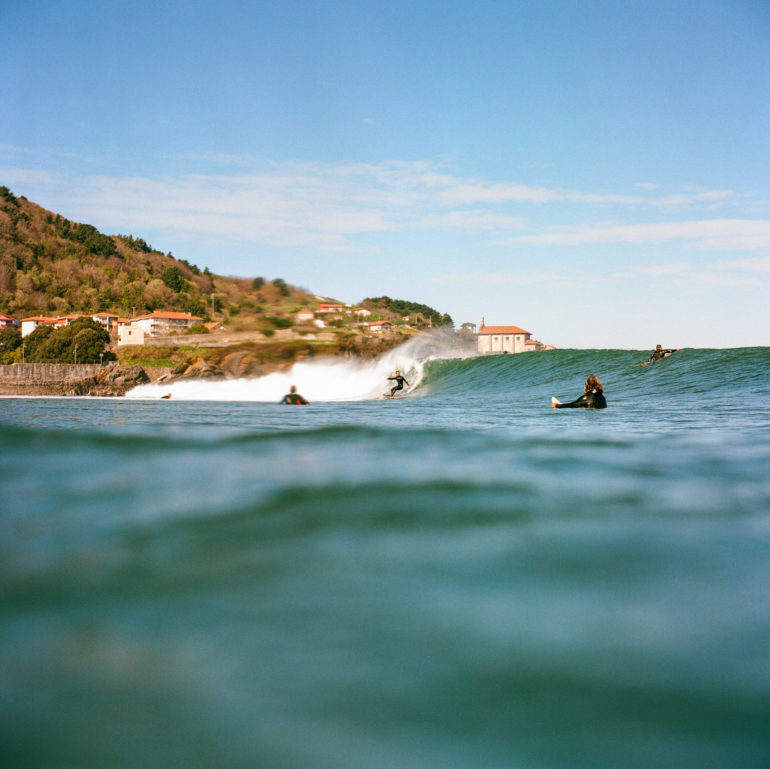
For 35mm film I use the Hasselblad XPAN with two lenses (45mm & 90mm) and here I have taken an underwater housing from Salty Surf Housings from Australia. I usually fill both cameras with negative films from Kodak, mostly a version of Portra or TMax, simply because I love the colors and because they give me a lot of freedom in converting the images, especially in terms of the dynamic range.
The Phoblographer: Of all the subjects you’ve captured while floating, which ones have been your favourites and why?
Swen Bachmann: That is a difficult question because it is not the photos at the end; it’s the feelings, the experiences, the people and the nature in the individual moments that make up the photo for me personally. It doesn’t matter if it is new years eve surfing in the Baltic Sea with friends or when I paddled out to sea on a quiet summer morning in Etretat for the famous rocks of the Alabaster Coast. In the end, the photos mean the most to me when I have worked a lot for the moment, and the happiness of nature touches me.
To this day, one of my absolute favorite pictures is the Danish wave with the church tower on the coast – it was the end of December, and the sea was very much rough and bitterly cold. I had to fight hard with the current, and the weather was like the sea, but for a few seconds, the sun came out and released this moment of happiness on film.
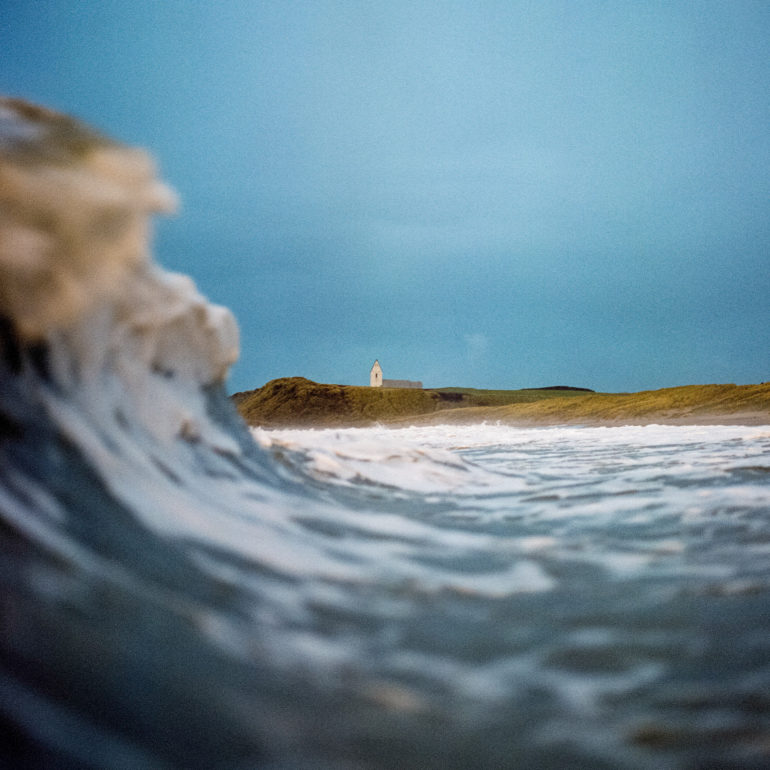
The Phoblographer: Do you often go below the surface? What goes on in your mind just before you go under?
Swen Bachmann: I hardly go under the surface of the water, if at all, because the oceans around me are unfortunately too seldom clear. Nevertheless, I know a few photographers who have also bought the underwater housing for the 500 CM, and their results motivate me to dive at the next opportunity.
Before I get into the water with one of the cameras or leave the solid ground with the rubber dinghy or stand up paddleboard, I often feel calm and quiet because everyday life leaves me. I never have a picture in front of my eyes that I really want to take, but I just let myself into the elements and the moments.
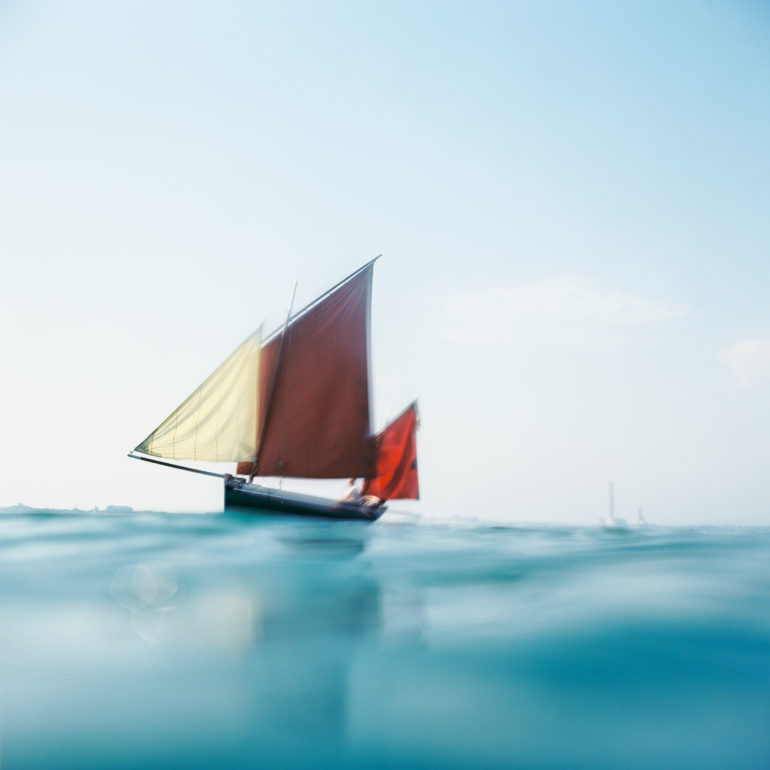
The Phoblographer: You’ve also avoided the temptation to do the 50-50 split shots. Do these type of photos seem cliché to you?
Swen Bachmann: First of all, I have to admit that with my analog setup with the 500 CM and the XPAN, I can’t take these types of photos because, in the sixties, there weren’t any such accessories, or the rangefinder camera didn’t allow me to use a large dome. On the other hand, there are really, really good split shots that are nice to look at, but they never trigger the “do it yourself” feeling. Fortunately, photography is a great playground for ideas that can be implemented and moments that can be captured. Everyone finds theirs and is likely to meet people who feel the same way.
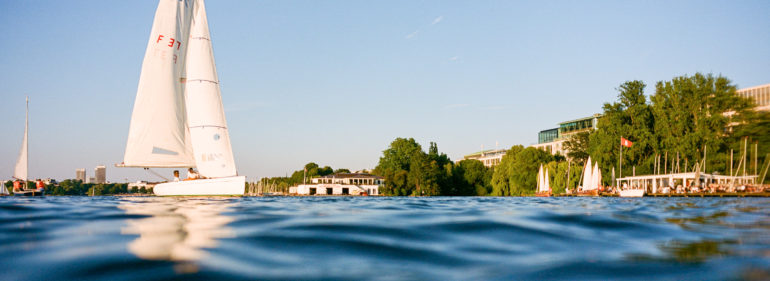
The Phoblographer: Ships, sailing boats and surfers are featured in your work a lot. Is there any personal connection to these, or just photogenic subjects?
Swen Bachmann: I love surfing, or in general, I love to be on the water, whether with the stand-up paddleboard or with the kayak. For this reason, surfers are a very popular motif, if my usual work allows it. If you also appreciate nature by the sea to the same extent, you cannot avoid the beauty and elegance of sailing. And if you still live in Hamburg, with one of the largest harbors in the world, there are a lot of things and moments from the water to discover and look at. But a nice surf trip on weekends to the Baltic or the North Sea coast is still the best and beats everything else.
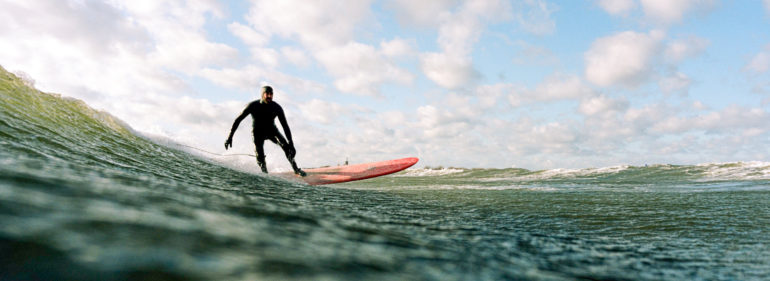
The Phoblographer: Does Liko also join you on a lot of your photography shoots? Does he have his own wetsuit too?
Swen Bachmann: Liko is somehow involved in almost all adventures – the only difference is that when I put on my wetsuit, he crawls into our van to chill out, and when I finish the boat or my Stand Up paddleboard, he really wants his life jacket on. But mostly, he is also a very curious dog and always wants to see exactly what I’m doing while taking photos, why he has to be often on land and is enjoying the beach life with my wife. Liko is best suited as a model – he sits calmly and waits until I have taken the photo.
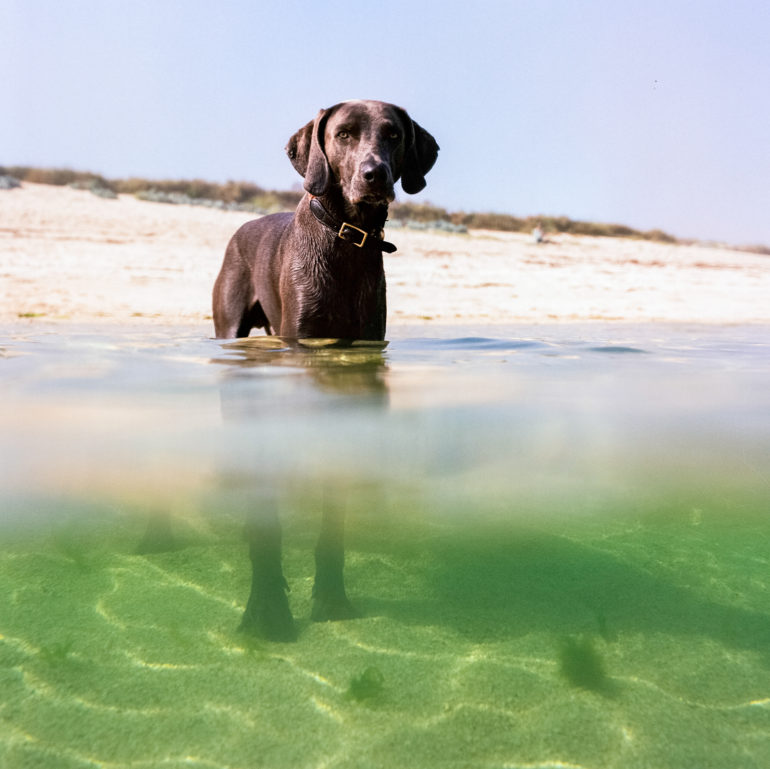
The Phoblographer: How often do you cycle through a roll of film?
Swen Bachmann: We like to look at the analog pictures again and again on the iPad or on our van pictures on the cupboards. We have also framed several large prints and hung them in our apartment. And that is also the difference to the digital pictures of my Hasselblad – they are mega good and beautiful, but they do not have the same emotional value as the analogue ones. I like to use the digital back, especially for assignments and trips, because it is simply fast, high-resolution and uncomplicated, but again it captivates me more than I would like to on a screen.
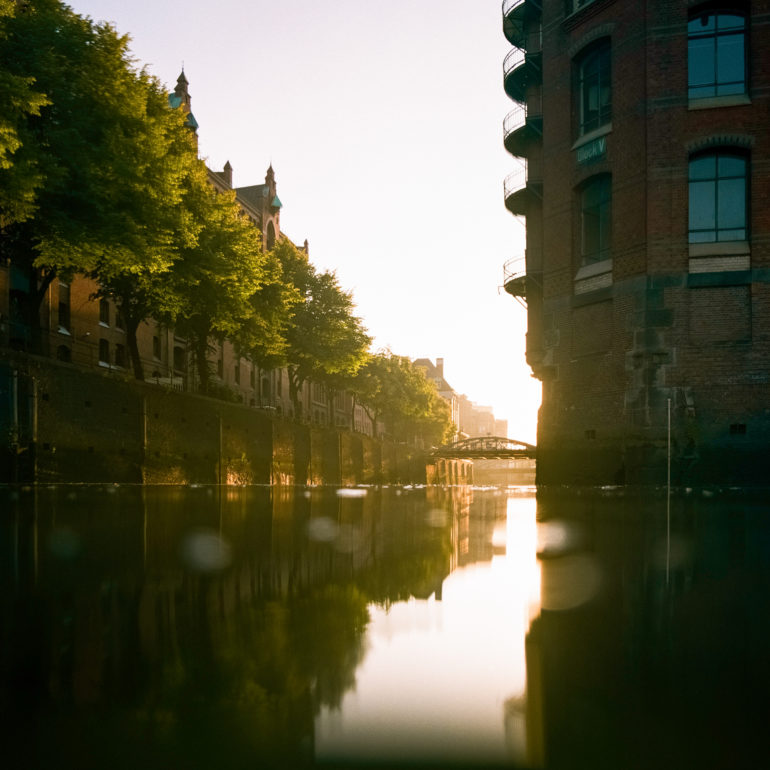
All images by Swen Bachmann. Used with permission. Visit his website and Instagram page to see more of his work.


